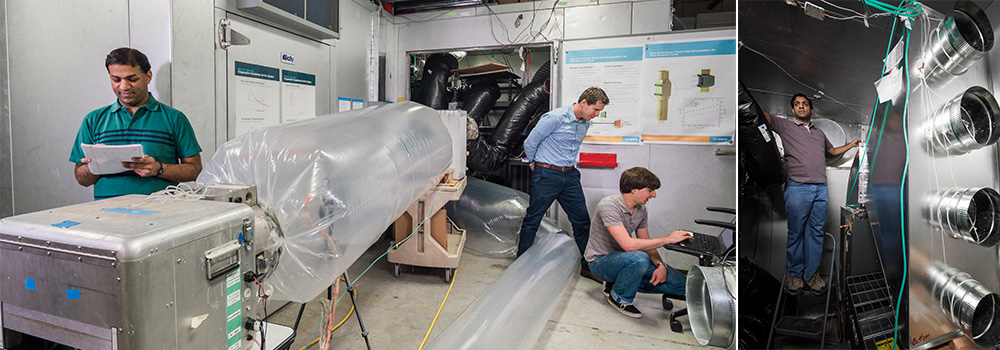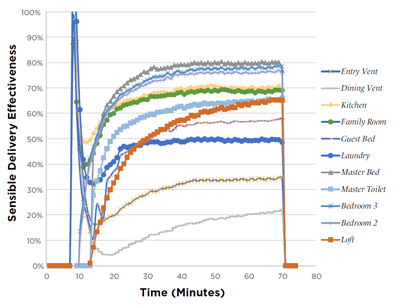
Problem
Solution
Goal and Results
2019
This project is evaluating how the performance of a typical duct system changes as variable-speed equipment modulates its speed.
We evaluated the impact that a typical residential duct system, located outside the conditioned space (e.g., in the attic), had on variable speed heat pump performance. There were three primary phases of this research:
Phase I: Laboratory testing with a single-zone configuration
Phase II: Laboratory testing with a multi-zone configuration
Phase III: Field testing with a multi-zone configuration
Zoning was very effective at maintaining system performance under part load conditions. With a single-zone configuration, there were significant losses of cooling to the attic at lower speeds. Even though equipment performance generally improves at lower speeds, researchers found that optimal performance of the combined equipment and duct system occurred at high speeds when hot attic temperatures exceed 95°F.
Adding zoning capability significantly improved system performance at lower speeds by maintaining duct velocities. The optimal strategy for achieving this was by matching the fraction of capacity to the fraction of the duct system served. For example, if the system was running at 50% speed, cooling was delivered to only 50% of the zones.
Real-world observations confirmed that fractional duct thermal losses increased as duct velocity decreased.

Sensible delivery effectiveness for each grill at field site during a period of full-speed operation with a single-zone configuration and R-6 duct insulation.
2018
WCEC evaluated the impact that a typical residential duct system, located outside the conditioned space (e.g., in the attic), had on system performance. In Phase I, researchers tested system performance in the laboratory under a single-zone configuration. In Phase II, researchers tested system performance under a multi-zone configuration.
Researchers found that zoning can significantly improve delivery effectiveness with nearly twice the amount of cooling making it to the conditioned space compared to a non-zoned system at low speed and hot attic temperatures. In addition, researchers found that at low attic temperatures there was an advantage to using variable speed equipment and even more of an advantage when including zoning. At high attic temperatures, there was no advantage to reducing equipment speed since the optimal performance occurred at 100% speed, but there was still a slight advantage using variable speed equipment with zoning controls allowing the system to run at lower power at higher efficiency.
